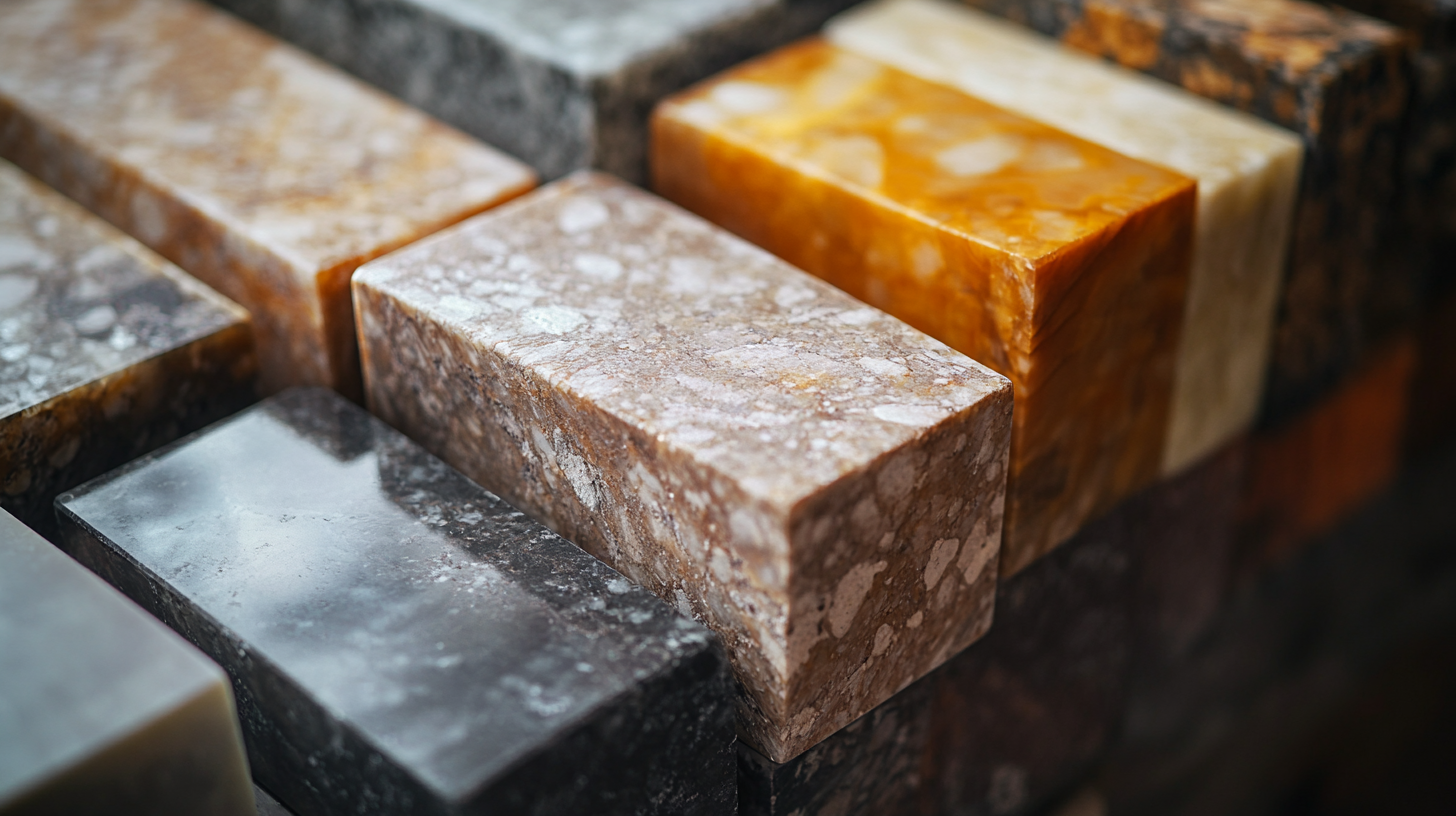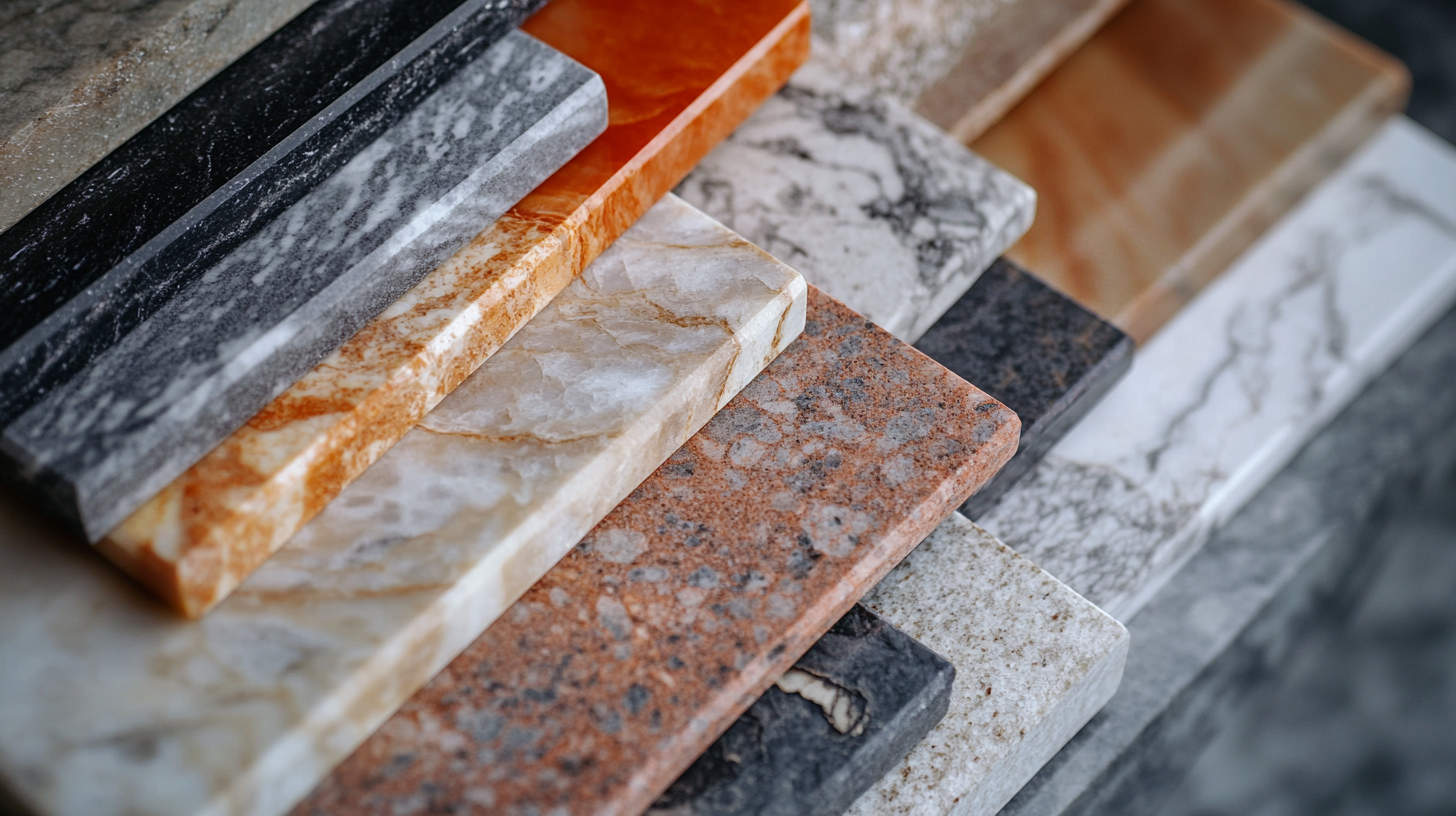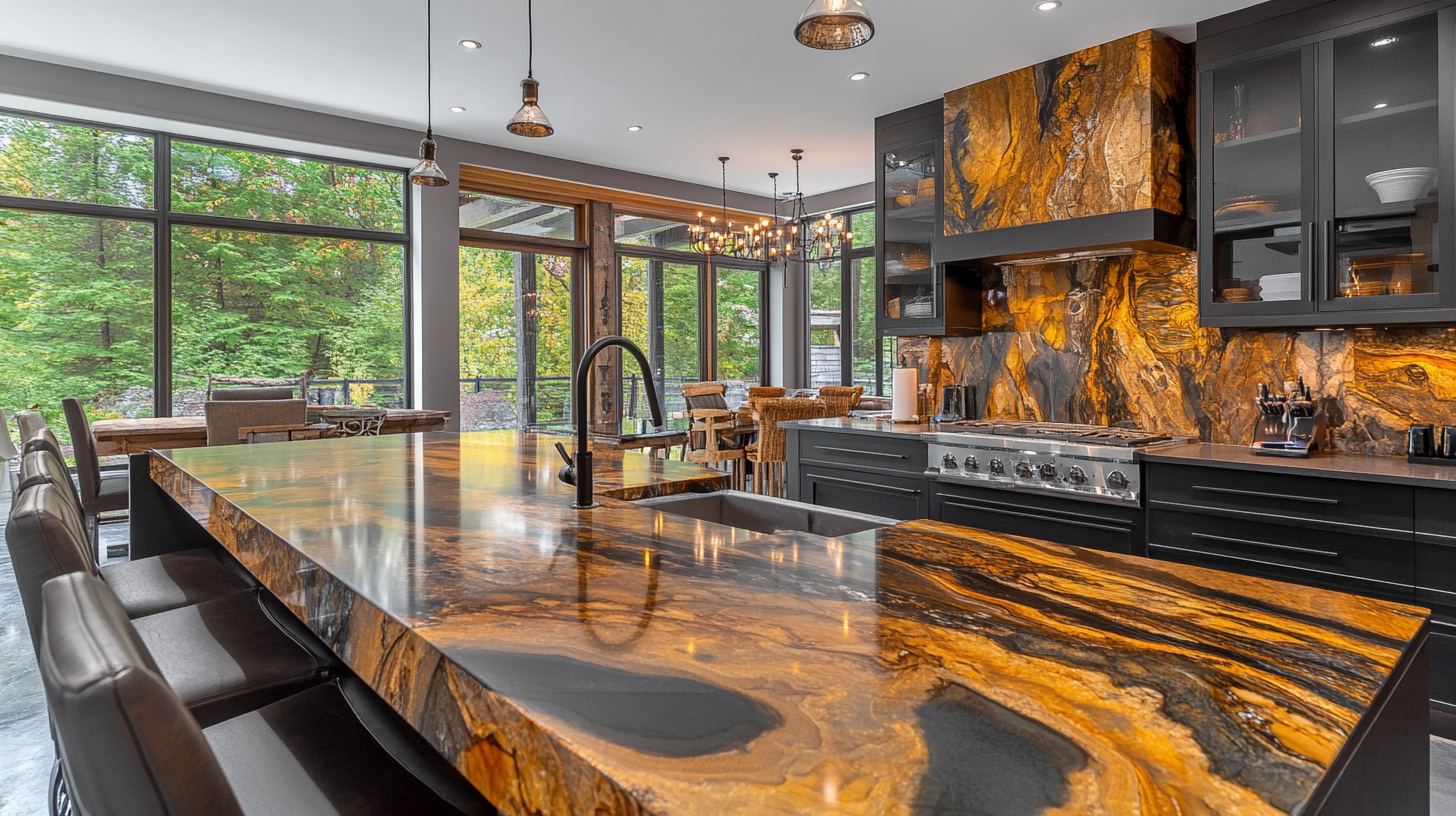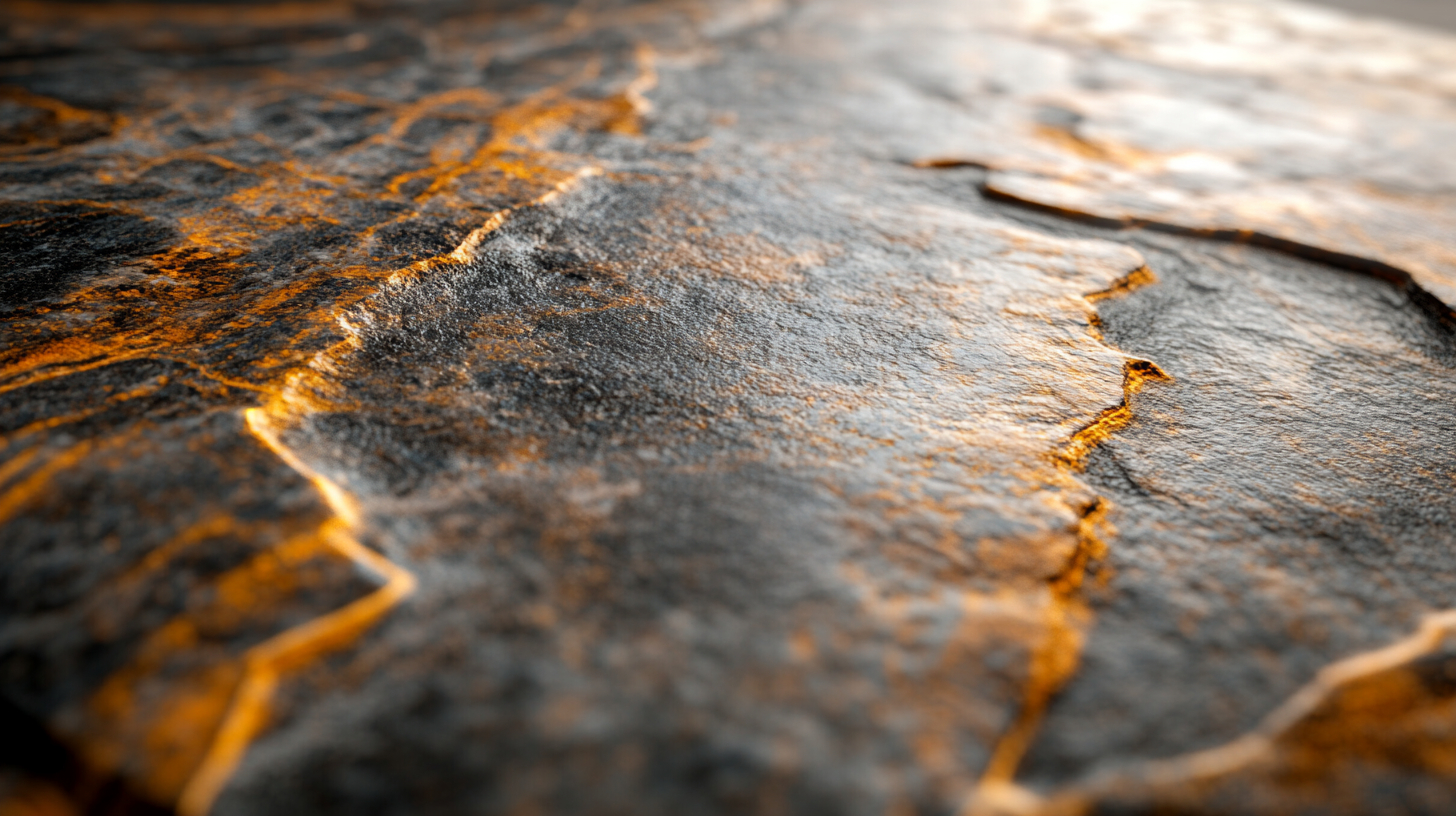Blog
Exploring the Unique Attributes and Applications of Various Stone Countertop Options
The demand for stone countertops has seen a significant surge in recent years, attributed to their durability, aesthetic appeal, and versatility. According to a report by the Freedonia Group, the market for stone countertops is projected to reach $8.5 billion by 2024, driven by the increasing preference for natural materials in home renovations and new constructions. Homeowners and designers alike are gravitating towards options like granite, marble, and quartz, not only for their stunning visual qualities but also for their resistance to wear and tear, making them ideal for high-traffic areas such as kitchens and bathrooms.
As the stone countertop market evolves, new applications and innovative designs emerge, catering to diverse tastes and functional needs. In addition to traditional uses, stone countertops are finding their way into various settings, including commercial spaces and outdoor kitchens. The National Kitchen & Bath Association reports that 60% of homeowners prioritize stone countertops in their renovation projects, highlighting their status as a must-have feature. This blog will explore the unique attributes and applications of various stone countertop options, assisting consumers in making informed decisions for their spaces.

The Timeless Elegance of Marble: A Deep Dive into Its Features and Uses
Marble has long been celebrated for its timeless elegance, making it a favored choice among interior designers and homeowners alike. The luxurious appeal of marble, with its unique veining and rich textures, adds a sophisticated touch to any space. As highlighted in the recent discussions on design trends, marble is not just a classic material; it embodies a blend of artistry and functionality that continues to inspire contemporary aesthetics. For instance, the recent showcase of a chic bathroom adorned with marble subway tiles reflects the material's versatility and continuous relevance. This design choice not only enhances the visual appeal but also exemplifies how marble can create an atmosphere of luxury and refinement. Interior designers emphasize that incorporating marble elements, whether in countertops or wall features, can elevate the overall style of a space while providing a sense of timeless beauty. In addition to its aesthetic qualities, marble is renowned for its durability and longevity. With proper care, marble can withstand the test of time, making it a practical investment for kitchens and bathrooms alike. As we move toward 2025, the trend of incorporating marble into living spaces shows no signs of waning. Its ability to harmonize with various design philosophies—from neo-classical elegance to modern chic—ensures that marble remains a perennial favorite among design enthusiasts.

Granite Countertops: Durability Meets Aesthetic Appeal in Home Design
Granite countertops have long been a favored choice in home design, celebrated for their durability and aesthetic appeal. These natural stones are not only resilient to everyday wear and tear but also offer a variety of striking colors and patterns that can complement any kitchen or bathroom design. According to recent industry trends, granite and quartz continue to be the most popular choices among homeowners, signifying their timeless allure in a rapidly evolving design landscape.
Experts note that while granite boasts impressive durability, alternatives like quartz and soapstone are also gaining traction. Soapstone, in particular, is becoming known for its sleek, dark appearance and is much easier to maintain than traditional granite or marble. As interior design expert Margie Kaercher highlights, quartz and quartzite's popularity reflects a shift toward materials that combine style with minimal upkeep. With the proliferation of stunning stone options, homeowners are increasingly drawn to materials that not only stand the test of time but also provide a luxurious yet practical solution to their countertop needs.
Furthermore, with 2025 fast approaching, designers emphasize the importance of choosing countertops that reflect both personal style and longevity. Marble remains a classic choice but is often considered high-maintenance, prompting many to explore durable alternatives that do not compromise on elegance. As reported, granite continues to thrive alongside these alternatives, ensuring that its blend of resilience and beauty will remain a staple in home design for years to come.

Quartz Surfaces: The Perfect Blend of Functionality and Style
When it comes to enhancing the aesthetics and functionality of modern spaces, quartz surfaces stand out as a premier choice among various stone countertop options. Unlike traditional materials, quartz countertops are engineered to offer a consistent and visually appealing surface, seamlessly blending form and function. Available in a myriad of colors and patterns, these surfaces cater to diverse design preferences while maintaining durability and ease of maintenance.
The fusion of functionality and style in quartz surfaces makes them particularly appealing for contemporary interiors. Their non-porous nature means they resist stains and bacteria, making them an ideal choice for kitchens and bathrooms where hygiene is paramount. This combination of practicality and artistic expression allows homeowners to curate a space that is both beautiful and livable.
As the design world continues to evolve, innovative approaches similar to those seen in cutting-edge timepieces are inspiring trends in interior decor. The integration of unique attributes in stone materials, like quartz, mirrors the fresh perspectives we observe in other luxury industries, where craftsmanship meets avant-garde design. Just as brands are breaking boundaries in the watch industry, the evolution of quartz surfaces is a testament to how traditional materials can be reimagined to suit modern tastes.

Soapstone Countertops: Unique Textures and Heat Resistance Explored
Soapstone countertops are increasingly gaining popularity among homeowners and designers alike due to their unique textures and exceptional heat resistance. This metamorphic rock, primarily composed of talc, provides a warm and inviting aesthetic that complements various kitchen styles. According to a report by the National Kitchen & Bath Association, around 20% of homeowners are now opting for stone countertops, with soapstone representing a unique segment due to its softer, tactile surface that can be easily shaped and refinished over time.
One of the most notable features of soapstone is its remarkable ability to withstand heat. Unlike other countertop materials, soapstone can tolerate high temperatures without warping or cracking. Industry studies indicate that soapstone can resist heat up to 1,000°F, making it an ideal choice for kitchen environments where hot pots and pans are frequently placed on the surface. This durability adds to its appeal, as it offers functionality alongside its visual appeal.
Additionally, soapstone is non-porous, which means it is resistant to staining and bacterial growth. This property is particularly important in kitchens, where hygiene is paramount. According to a report from The Kitchen & Bath Channel, the demand for non-porous materials has risen by 25% in recent years, aligning perfectly with the characteristics of soapstone. As homeowners become more discerning about materials that enhance both beauty and functionality, soapstone countertops stand out as a versatile choice that meets modern kitchen demands.
Limestone and Travertine: Natural Beauty and Versatile Applications in Interiors
When it comes to selecting stone countertops, limestone and travertine stand out for their natural beauty and versatile applications in interior design. Limestone, formed from sedimentary deposits, offers a soft, earthy palette ranging from creamy whites to deep browns. Its subtle texture and warm tones create a soothing ambiance, making it ideal for kitchens and bathrooms where comfort is key. Additionally, limestone is relatively easy to cut and shape, allowing for unique designs that can enhance various architectural styles.
On the other hand, travertine, a type of limestone formed by mineral springs, presents a more porous surface with a distinctive texture that adds character to any space. Its tumbled finish exudes a rustic charm, perfect for Mediterranean or traditional settings. As a countertop, travertine offers durability and heat resistance, making it a practical choice for busy kitchens. Its versatile nature means it can be used not only for countertops but also for backsplashes and flooring, providing consistency throughout the home.
Both limestone and travertine can be sealed to protect against stains and moisture, enhancing their longevity while maintaining their natural appeal. Whether you're aiming for a contemporary kitchen or a classic bathroom oasis, these stone options provide an organic elegance that elevates the aesthetic of any interior space.

